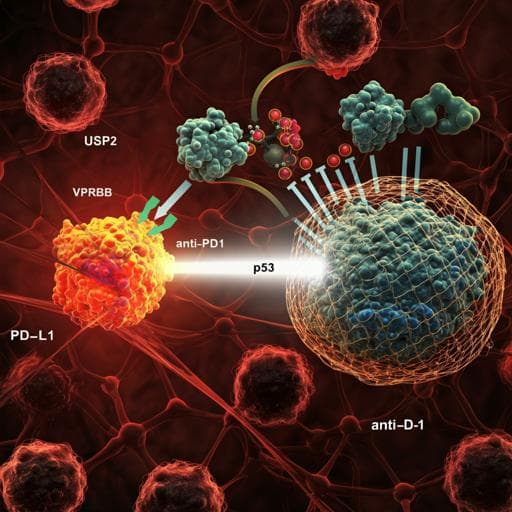
Medicine and Health
Targeting USP2 regulation of VPRBP-mediated degradation of p53 and PD-L1 for cancer therapy
J. Yi, O. Tavana, et al.
Exciting discoveries in cancer therapy show that targeting the USP2-VPRBP axis can effectively reactivate p53 and reduce toxicity compared to traditional Mdm2 inhibitors. This innovative approach, explored by authors Jingjie Yi, Omid Tavana, Huan Li, Donglai Wang, Richard J. Baer, and Wei Gu, demonstrates complete tumor regression in wild-type p53 tumors with the combination of a USP2 inhibitor and anti-PD1 antibody.
~3 min • Beginner • English
Related Publications
Explore these studies to deepen your understanding of the subject.







